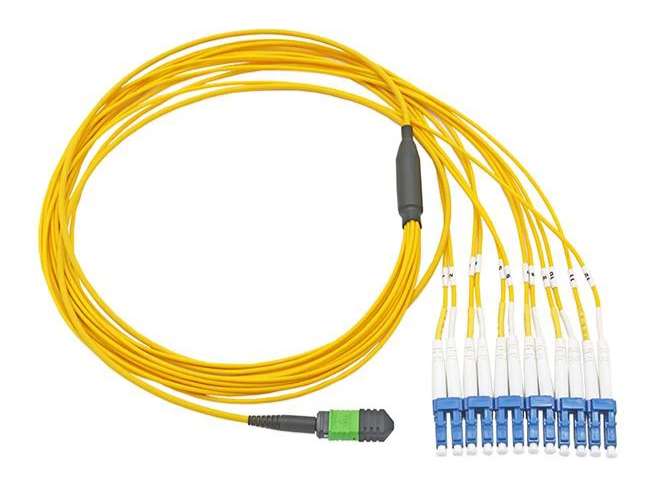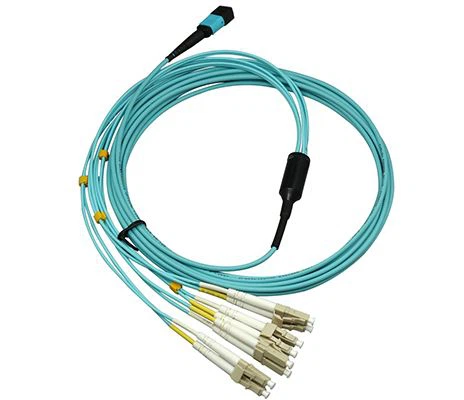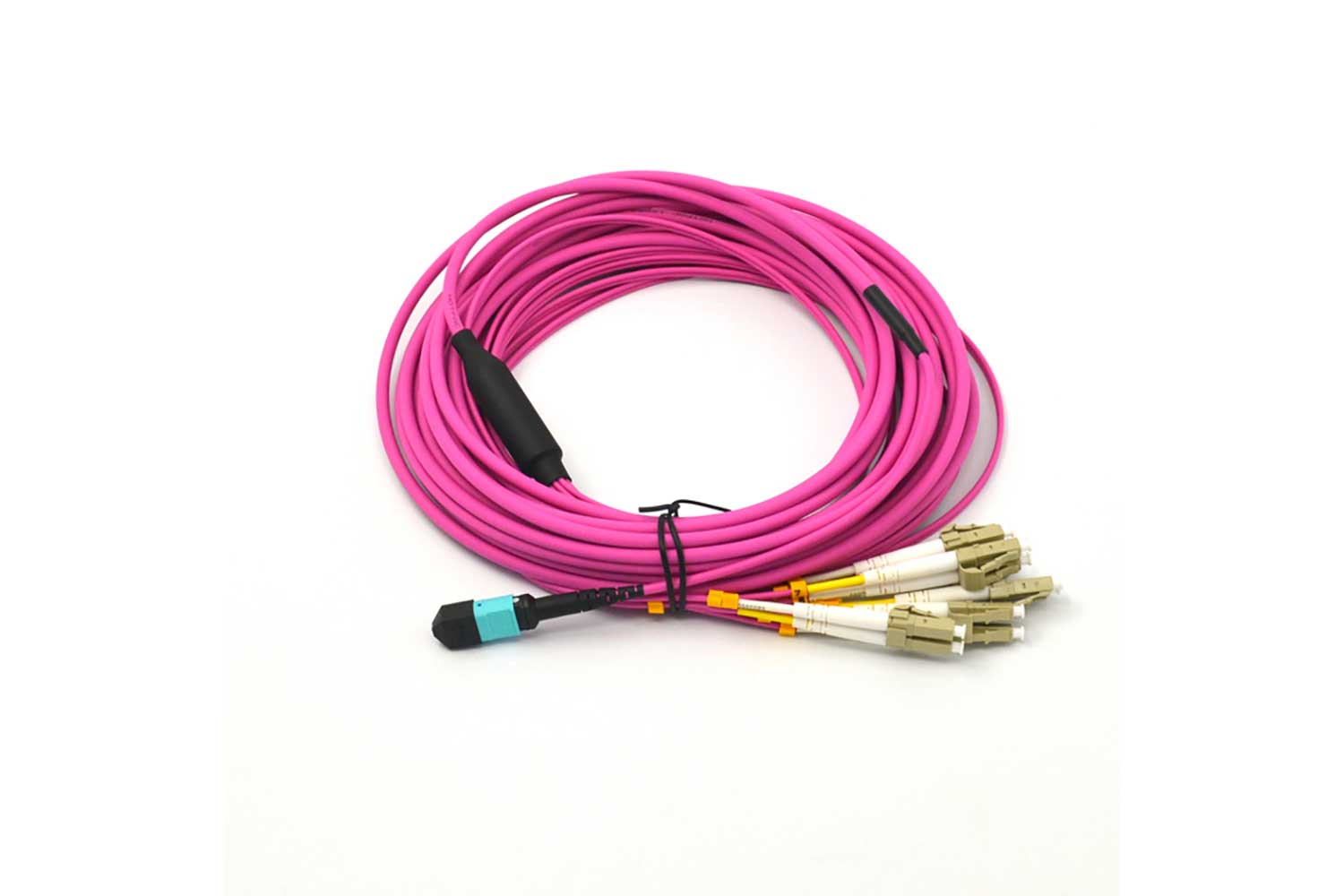The Future of Fiber Preconnection Solutions: Exploring MTP-LC Duplex 12cores Trunk Cable Patchcord

Unveiling Fiber Preconnection Solutions
Fiber preconnection solutions play a crucial role in ensuring efficient and reliable network connectivity. These solutions provide a convenient and cost-effective way to establish fiber connections by preterminating cables before installation. By eliminating the need for on-site termination, fiber preconnection solutions save time and effort during network deployment.
The significance of fiber preconnection solutions lies in their ability to simplify the installation process while maintaining high performance standards. They offer a reliable and scalable solution for various applications, including data centers, telecommunications networks, and enterprise environments.
With fiber preconnect solutions like the MTP-LC Duplex 12cores Trunk Cable Patchcord, organizations can achieve faster deployment times, reduced labor costs, and improved overall network performance. These innovative solutions are designed to meet the growing demand for high-speed data transmission and ensure seamless connectivity across different network architectures.
Understanding the Importance of Fiber Patch Cables
Fiber patch cables are a critical component in network infrastructure, playing a vital role in enhancing network performance and ensuring reliable data transmission. These cables, also known as fiber optic patch cables or fiber jumper cables, provide the necessary connectivity between devices in a network.
Enhancing Network Performance with Fiber Patch Cables
Fiber patch cables offer several advantages that contribute to improved network performance. Firstly, they provide low signal loss and high bandwidth capabilities, allowing for fast and efficient data transmission over long distances. This makes them ideal for applications requiring high-speed connectivity, such as data centers and telecommunications networks.
Additionally, fiber patch cables are immune to electromagnetic interference (EMI) and radio frequency interference (RFI), ensuring reliable signal transmission even in challenging environments. Their small form factor and lightweight design make them easy to install and manage within tight spaces.
Types and Variations of Fiber Patch Cables
There are different types of fiber patch cables available to suit various network requirements. Single-mode fiber patch cables are designed for long-distance transmissions, making them suitable for applications spanning large areas. On the other hand, multimode fiber patch cables are ideal for short-range connections within buildings or campuses.
When selecting the right fiber patch cable, it is essential to consider factors such as connector type (such as LC or SC), cable length, and cable jacket material. The connector type should match the ports on the devices being connected, while the cable length should be sufficient for the desired distance between devices. The cable jacket material should be chosen based on environmental considerations like flame resistance or outdoor durability.
By choosing the appropriate type of fiber patch cable for your specific needs and considering these important factors during selection, you can ensure optimal network performance and seamless connectivity.

Exploring the MTP-LC Duplex 12cores Trunk Cable Patchcord
The MTP-LC Duplex 12cores Trunk Cable Patchcord is a cutting-edge fiber preconnection solution that offers numerous features and benefits for seamless network connectivity.
Introduction to the MTP-LC Duplex 12cores Trunk Cable Patchcord
The MTP-LC Duplex 12cores Trunk Cable Patchcord combines the advantages of an MTP connector and LC connectors, providing a high-density and reliable solution for fiber connections. With its compact design, this patchcord allows for easy installation and management in data centers, telecommunications networks, and other high-density environments.
This innovative patchcord offers several features that make it stand out. Firstly, it supports up to 12 fibers in a single cable, enabling efficient data transmission with reduced cable clutter. The MTP connector provides quick and secure connections, while the LC connectors offer compatibility with various devices.
Advantages over Other Fiber Preconnection Solutions
Compared to other fiber preconnection solutions, the MTP-LC Duplex 12cores Trunk Cable Patchcord offers distinct advantages. Its high-density design allows for more efficient use of space within network cabinets or racks. This results in improved airflow and easier cable management.
Furthermore, the MTP-LC Duplex 12cores Trunk Cable Patchcord simplifies network deployments by reducing installation time and labor costs. Its plug-and-play capability eliminates the need for on-site termination, ensuring faster deployment without compromising performance.
In addition to its practical benefits, this patchcord is also highly versatile. It can be used in various applications such as backbone cabling, server interconnects, and fiber channel connections. Its compatibility with different network architectures makes it a flexible choice for diverse networking needs.
With its advanced features and advantages over traditional preconnection solutions, the MTP-LC Duplex 12cores Trunk Cable Patchcord is revolutionizing fiber connectivity and setting new standards for network performance.
Installation, Maintenance, and Troubleshooting Tips
Proper installation, maintenance, and troubleshooting are essential for ensuring the optimal performance and longevity of the MTP-LC Duplex 12cores Trunk Cable Patchcord.
Proper Installation of the MTP-LC Duplex 12cores Trunk Cable Patchcord
To install the MTP-LC Duplex 12cores Trunk Cable Patchcord correctly, follow these steps:
Begin by preparing the cable ends: Strip the outer jacket carefully to expose the fibers without damaging them.
Clean the fiber ends: Use lint-free wipes and isopropyl alcohol to clean both ends of the fibers thoroughly.
Align and connect: Align the MTP connector with its corresponding port and gently push it in until you hear a click. Repeat this step for all connectors.
Test for connectivity: Use a visual fault locator or an optical power meter to verify that all connections are secure and transmitting light properly.
Secure the cables: Use cable ties or Velcro straps to organize and secure the cables neatly.
Following these installation best practices will ensure a secure and reliable connection, minimizing signal loss or disruptions.
Maintenance and Troubleshooting Techniques
To maintain optimal performance of your MTP-LC Duplex 12cores Trunk Cable Patchcord:
Regularly inspect the patchcord for any signs of damage such as cuts, bends, or loose connectors. Replace any damaged components promptly.
Keep connectors clean by using lint-free wipes and isopropyl alcohol to remove dust or debris that may affect signal transmission.
Avoid excessive bending or pulling on the cable, as this can strain or break the fibers inside.
When troubleshooting connectivity issues, start by checking for loose connections or dirty connectors. Cleaning or reseating them may resolve minor issues.
If problems persist, use an optical time-domain reflectometer (OTDR) to identify any breaks or faults in the cable. Professional assistance may be required for complex issues.
By following these maintenance and troubleshooting techniques, you can ensure the longevity and reliable performance of your MTP-LC Duplex 12cores Trunk Cable Patchcord.

Future Prospects and Considerations for Patch Cables
As technology continues to evolve, patch cables, including fiber optic patch cables and trunk cable patchcords, are expected to undergo significant advancements in the coming years.
Emerging Trends in Patch Cable Technology
The latest advancements in patch cable technology are focused on improving performance, scalability, and ease of use. One emerging trend is the development of higher-density connectors, allowing for more fibers to be transmitted within a single cable. This enables greater bandwidth capacity and supports the increasing demand for high-speed data transmission.
Another trend is the integration of advanced features into patch cables. For example, some patch cables now incorporate bend-insensitive fibers that can withstand tight bends without signal loss. Additionally, there are patch cables with built-in polarity management features that simplify installation and reduce errors during network deployment.
Predictions for the future of patch cables in networking include the adoption of even smaller form factors to accommodate denser network architectures. Furthermore, advancements in materials and manufacturing techniques may lead to more durable and environmentally resistant patch cables suitable for various applications.
Factors to Consider when Choosing a Patch Cable
When selecting a patch cable for your network, several key considerations should be taken into account:
Connector Type: Ensure compatibility between the connector type on the patch cable and the ports on your devices.
Fiber Type: Choose between single-mode or multimode fiber based on your specific application requirements.
Cable Length: Determine the appropriate length needed to connect devices within your network infrastructure.
Bandwidth Requirements: Consider the required bandwidth capacity to support current and future data transmission needs.
Environmental Factors: Evaluate whether outdoor-rated or flame-resistant jacket materials are necessary based on installation environment.
To optimize performance and reliability, it's important to follow best practices such as maintaining proper cable management, avoiding excessive bending or pulling of cables, and regularly inspecting connectors for damage or dirt buildup.
By considering these factors and staying informed about emerging trends in patch cable technology, you can make informed decisions when selecting and deploying patch cables in your network.
Embracing the Future of Fiber Preconnection Solutions
The MTP-LC Duplex 12cores Trunk Cable Patchcord represents a significant advancement in fiber preconnection solutions, revolutionizing the way networks are deployed and managed. With its high-density design, ease of installation, and compatibility with various network architectures, this patchcord offers a reliable and scalable solution for organizations.
To stay ahead in the ever-evolving world of networking, it is crucial to embrace the latest advancements in patch cable technology. By keeping up with emerging trends and considering factors such as connector type, fiber type, and environmental requirements when choosing patch cables, you can ensure optimal performance and future-proof your network infrastructure.
Embrace the future of fiber preconnection solutions by adopting innovative technologies like the MTP-LC Duplex 12cores Trunk Cable Patchcord and staying informed about the latest developments in patch cable technology.
See Also
The Future of Outdoor Fiber Patch Cables: Exploring the Advantages of Preconnection Solutions
Exploring the Applications of LC SC Duplex Fiber Optic Adapters
Unlocking the Applications of MTP Connector Trunk Cables
Exploring IP68 Outdoor Fiber Optic Cables
Waterproof Connectors in FTTH Networks: Enhancing Performance and Reliability
About US
Follow Us
AnetFiber company's main products are indoor and outdoor optical fiber cables, outdoor waterproof pre-connected fiber-to-the-home products, PLC optical fiber splitters, optical fiber jumpers and pigtails, MTP®/MPO high-density big data product solutions, optical fiber field quick connectors and research and development molding, injection molding and production of optical fiber distribution boxes, optical fiber chassis cabinets, the market has expanded to the world, Europe, America, Asia, the Middle East and Latin America.
Address
Shenzhen City, Baoan District, Yanluo Street, Tangxiayong Community, Yangyong Industrial Road, Tonggangda New Energy Vehicle Park 406
Contacts
+86 199 2655 3586

